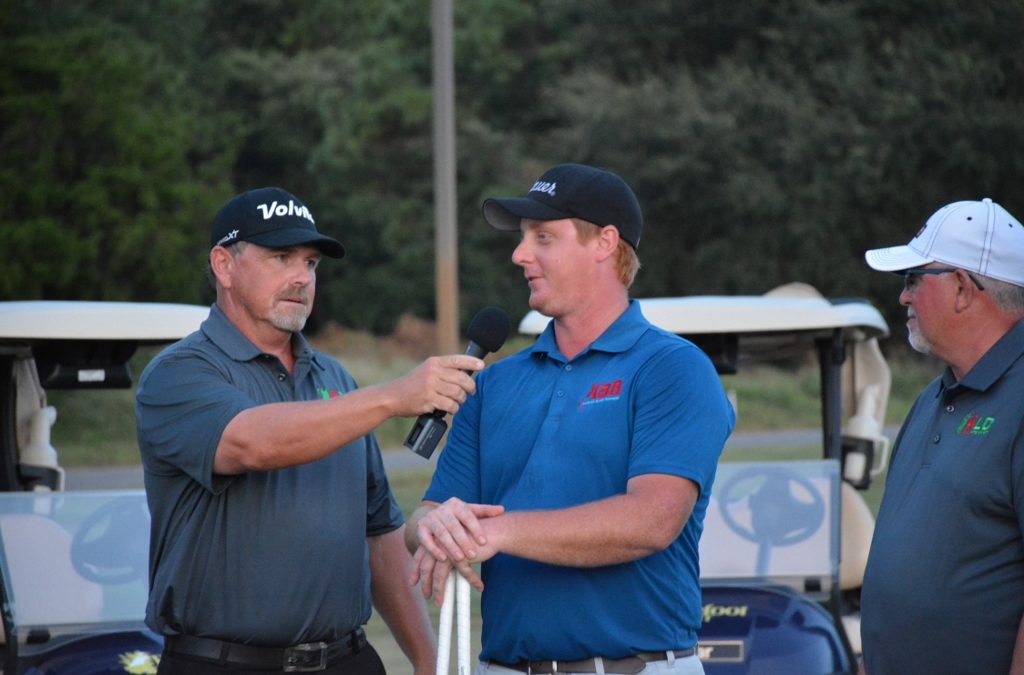Long Drive
Long Drive, from the top down, is experiencing a well-deserved resurgence in popularity following the acquisition of LDA in 2015 by The Golf Channel or Comcast / NBC Sports….however that officially rests. After Remax departed as title sponsor of 20 years, the sport that found life in 1976 was in serious jeopardy. Maintaining the momentum gained over the last two decades was the challenge. It’s a great fit for The Golf Channel and the timing couldn’t have been better in 2015. Made possible by an influx of sponsor (Remax) dollars and the leadership of Art Sellinger, Long Drive’s identity was solidified through the production of it’s World Championship. Those shows demonstrated the excitement, entertainment, and adrenaline-fueled competition that made the sport unique. Anything less than previous performance would have been a huge blow for the sport. This acquisition was certainly an historical moment, and a great step in the future of a great sport.
It is important to recognize and maintain the history of any sport to better understand its future possibilities. Long drive history is filled with great, unforgettable, moments at the top of the sport. There were certainly many great moments below the top, that were very important in the development of the sport, that are not so well documented.
World Long Drive History – The Winners At The Top
OPEN DIVISION |
||
| YEAR | WINNER | WINNING DRIVE |
| 1976 | Evan Williams | 307 Yards |
| 1977 | Evan Williams | 353 Yards |
| 1978 | John McComish | 330 Yards |
| 1979 | Andy Franks | 314 Yards |
| 1980 | Scott DeCandia | 295 Yards |
| 1981 | Lon Hinkle | 338 Yards |
| 1982 | Andy Franks | 346 Yards |
| 1983 | Terry Forcum | 307 Yards |
| 1984 | Wedgy Winchester | 319 Yards |
| 1985 | Dennis Paulson | 323 Yards |
| 1986 | Art Sellinger | 311 Yards |
| 1987 | Mike Gorton | 318 Yards |
| 1988 | Jim Maynard | 334 Yards |
| 1989 | Scott DeCandia | 327 Yards |
| 1990 | Frank Miller | 328 Yards |
| 1991 | Art Sellinger | 326 Yards |
| 1992 | Monte Scheinblum | 329 Yards |
| 1993 | Brian Pavlet | 336 Yards |
| 1994 | Darryl Anderson | 345 Yards |
| 1995 | Sean Fister | 362 Yards |
| 1996 | Jason Zuback | 351 Yards |
| 1997 | Jason Zuback | 412 Yards |
| 1998 | Jason Zuback | 361 Yards |
| 1999 | Jason Zuback | 376 Yards |
| 2000 | Viktor Johansson | 315 Yards |
| 2001 | Sean Fister | 376 Yards |
| 2002 | Carl Wolter | 384 Yards |
| 2003 | Clayton Burger | 402 Yards |
| 2004 | David Mobley | 377 Yards |
| 2005 | Sean Fister | 377 Yards |
| 2006 | Jason Zuback | 368 Yards |
| 2007 | Mike Dobbyn | 385 Yards |
| 2008 | Jamie Sadlowski | 418 Yards |
| 2009 | Jamie Sadlowski | 384 Yards |
| 2010 | Joe Miller | 414 Yards |
| 2011 | Carl Wolter | 409 Yards |
| 2012 | Ryan Winther | 343 Yards |
| 2013 | Tim Burke | 427 Yards |
| 2014 | Jeff Flagg | 365 Yards |
| 2015 | Tim Burke | 394 Yards |
| 2016 | Joe Miller | 423 Yards |
| 2017 | Justin James | 435 Yards |
| 2018 | Maurice Allen | 393 Yards |
MASTERS DIVISION |
||
| YEAR | WINNER | WINNING DRIVE |
| 1996 | Michael Hooper | 333 Yards |
| 1997 | Michael Hooper | 371 Yards |
| 1998 | Michael Hooper | 354 Yards |
| 1999 | Fred Hooter | 352 Yards |
| 2000 | Mike Gorton | 310 Yards |
| 2001 | Ted Fostey | 357 Yards |
| 2002 | Pat Dempsey | 342 Yards |
| 2003 | Eric Jones | 381 Yards |
| 2004 | Bobby Wilson | 360 Yards |
| 2005 | Gerry James | 366 Yards |
| 2006 | Gerry James | 378 Yards |
| 2007 | Frank Miller | 394 Yards |
| 2008 | Dan Boever | 366 Yards |
| 2009 | Bobby Wilson | 374 Yards |
| 2010 | George Slupski | 389 Yards |
| 2011 | David Mobley | 459 Yards |
| 2012 | Eric Lastowka | 355 Yards |
| 2013 | Stephen Kennedy | 369 Yards |
| 2014 | Jeff Gavin | 384 Yards |
| 2015 | Jason Zuback | 339 Yards |
| 2016 | Tom Peppard | 347 Yards |
| 2017 | Jeff Crittenden | 363 Yards |
| 2018 | Eddie Fernandes | 373 Yards |
WOMEN’S DIVISION
YEAR WINNER WINNING DRIVE
2000 Stacey Shinnick 249 Yards
2001 Lee Brandon 291 Yards
2002 Stacey Shinnick 292 Yards
2003 Nancy Abiecunas 332 Yards
2004 Sally Dee 287 Yards
2005 Stacey Shinnick 311 Yards
2006 Phillis Meti 326 Yards
2007 Sheila Kelliher 329 Yards
2008 Lana Lawless 245 Yards
2009 N/AN/A
2010 N/AN/A
2011 Sandra Carlborg 285 Yards
2012 Sandra Carlborg 339 Yards
2013 Heather Manfredda 306 Yards
2014 Sandra Carlborg 332 Yards
2015 Sandra Carlborg 321 Yards
2016 Phillis Meti 310 Yards
2017 Sandra Carlborg 320 Yards
2018 Phillis Meti 313 Yards
The Winners Below The Top
At various levels below the top of the sport, long drive history barely survives. The strength The Golf Channel brings to WLD and the sport in general is a huge benefit in creating demand and growing the fan base. But there needs to be an appropriate avenue to sprout and fertilize new talent and their fans at the grass roots level. Below the top there’s been little opportunity to generate awareness on a significant scale. Other than where a player make rank in the top 100 WLD competitors, winners at local and regional (non-WLD) events get little recognition. Most who enter major WLD events will go home without any recognition. Many enter smaller regional and local events that receive little fanfare. But, one might ask, “Isn’t that the way it normally goes in all sports?” Not necessarily so! Auto racing, specifically NASCAR, is a great example (in the beginning) of how a sport grew to the pinnacle it once achieved on the strength of local heroes from the local Saturday night racing circuits around the country. When those local stars made their way into the big time, they brought with them a very loyal fan base. Then came the tragedy. Brought on by greed, NASCAR began competing with the Saturday night race tracks by running night races. Consequently, they put many of the small local tracks out of business and effectively stopped the progression that created their success. Obviously there’s more to that story. I won’t bore you with a racing history lesson here, but if you ever want to have a one-on-one, I have several decades of research to share. They (NASCAR) essentially cut off their roots and their feeder system, and are now paying the price. They immediately lost a generation of fans….a devastating consequence they didn’t see coming. Virtually unknown drivers with lots of backing filled the fields. The sport lost its identity. That sport is dying, but there’s a lesson in the source of it’s success…and eventual demise to which we should pay close attention.
In addition to the exposure provided by WLD and The Golf Channel, grass roots long drive needs more attention given to the those “below the surface”. The sport needs a bona fide feeder system or minor league where competitors can gain on-the-tee experience while building their game, their presence, and their fan base. In my opinion, WLD could benefit greatly from a base like that, and the sport would be healthier long term with a solid foundation of players and fans.
Amateur Long Drive™ (ULD™)
While certainly not a “minor league” in the sense of professional sports norm, Amateur Long Drive™ (ULD™) may be in a position to contribute to grass roots development of the sport. Having been spawned by iNetGolf, a digital media company, ULD™ has the benefit of being part of a successful digital marketing company with a significant social media base and a long history in event promotion and management. iNetGolf and it’s associates’ have an ability to provide pre-event coverage, live streaming of events, and post event coverage that allows the competition to connect to a wider fan base and put on stage future personalities of the sport. Although, not the reach and caliber of The Golf Channel’s production, the potential reach with each major event is significant.
But even greater than the potential developmental aspect that ULD™ brings to the sport is the opportunity for normal people of all ages and abilities to participate in a new (to them) activity. Unlike NASCAR where most fans can only dream about competing due to hard-to-afford resources, fans of long drive can jump on the tee with an off-the-shelf driver next to folks just like them and compete. We think that’s perhaps the most significant piece in growing a stronger base for the sport. The Adult Male division is, and will most likely always be, the largest division, but we’ve been asked several times this season when we’re adding a 70+ year old division. We saw a 73 year old go 268 at the world championship this year. He lost to a much younger, (67 year old) Dennis Duncan in a hard-fought final championship round. Those competitors, rightfully so, feel disadvantaged when competing with those Super Senior youngsters at 65+ years old. You may be smiling right now, and the numbers may be insignificant right now, but the story is in the interest. The most important advice my father ever gave me was when he said (must have been at least a thousand times), “Boy, pay attention!” My father had an 8th grade education, and was one of the smartest people I’ve ever known. I miss him every day. So, I’m trying hard not to miss anything here.
ULD™ Championship Series
The ULD™ Championship Series takes the approach (in a way) of the Saturday night race track by creating “leagues” throughout the country for long drivers to compete. Anyone can compete at a local level on a regular basis. There are divisions for all ages and abilities. Those who aspire to become professional long drivers can finally get adequate on-the-tee competition and some recognition as well. All competitors have the opportunity to hone their skills and play their way into the ULD™ World Championship gaining recognition and fans along the way. The inaugural year of this series (begins Sept 1, 2018) will produce 8 to 10 leagues and 4 major regional qualifiers. Year one is expected to produce over 40 tournaments and 300 to 400 new competitors. Plans are to add leagues each year as demand justifies. Within a few years, ULD™ “could” be producing hundreds of annual tournaments with thousands of long drivers competing for world ranking points and a chance at becoming a World Champion long driver. Will it work? Great question! Only time will tell. What’s your opinion? We would like to hear your feedback.


